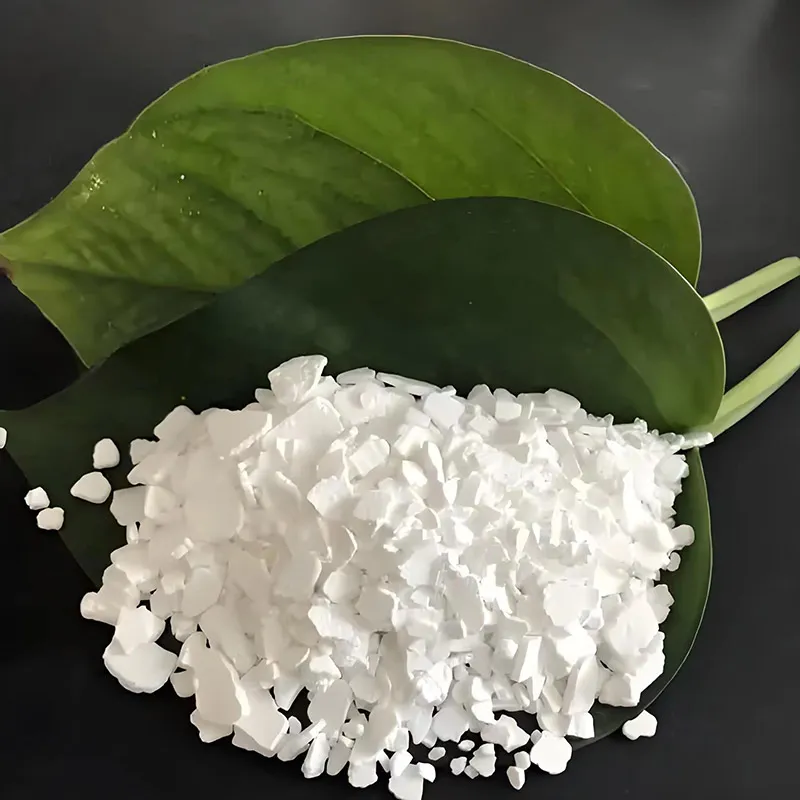Choosing the Right Snow Melting Agent: Factors to Consider for Effective Winter Maintenance
2024-08-13
Winter brings with it the challenge of managing snow and ice, particularly in areas where safety and accessibility are paramount. Whether you're responsible for a commercial property, a residential driveway, or municipal roads, choosing the right snow melting agent is crucial for effective winter maintenance. In this blog, we’ll guide you through the key factors to consider when selecting a snow melting agent.

Understanding Your Environment
The effectiveness of a snow melting agent largely depends on the environmental conditions where it will be used. Here are some factors to consider:
1. Temperature Range: Different snow melting agents have varying levels of effectiveness depending on the temperature. For instance, sodium chloride works well in temperatures down to -6°C (20°F), but for colder climates, calcium chloride, which works down to -25°C (-13°F), may be more appropriate.
2. Surface Type: The type of surface you need to treat can also influence your choice. For example, certain deicers can be corrosive to concrete or metal, while others may be safer for use on these surfaces. Calcium magnesium acetate is a less corrosive alternative that works well on concrete.
3. Environmental Sensitivity: If the area you’re treating is near vegetation, water sources, or sensitive ecosystems, you’ll need to consider the environmental impact of the snow melting agent. Potassium chloride and magnesium chloride are generally less harmful to the environment than traditional rock salt.
Types of Snow Melting Agents
Understanding the different types of snow melting agents will help you choose the right one for your specific needs:
1. Sodium Chloride (Rock Salt): Widely used for its affordability and effectiveness, rock salt is suitable for large-scale applications, such as roads and highways. However, its environmental impact and reduced effectiveness in very cold temperatures are drawbacks.
2. Calcium Chloride: Known for its rapid action and effectiveness in extremely cold temperatures, calcium chloride is a good choice for areas that require quick and efficient snow and ice removal.
3. Magnesium Chloride: With a lower environmental impact, magnesium chloride is ideal for residential and sensitive areas. It’s effective in moderately cold temperatures and is less corrosive than sodium chloride.
4. Potassium Chloride: Often chosen for its environmental benefits, potassium chloride is less effective in very cold temperatures but is a safer option for areas near plants and waterways.
5. Calcium Magnesium Acetate (CMA): This environmentally friendly option is less corrosive and works well on concrete. However, it’s more expensive than traditional salts, making it a better choice for areas where environmental concerns are a priority.
Cost vs. Performance
While it may be tempting to choose the cheapest snow melting agent available, it’s important to balance cost with performance. Lower-cost options like sodium chloride may require more frequent application and could cause damage to surfaces and the environment. On the other hand, higher-cost options like calcium chloride or CMA may offer better performance and fewer long-term impacts.
Application Method and Safety
How you apply the snow melting agent is also crucial for its effectiveness. Consider the following:
1. Granular vs. Liquid: Granular deicers are spread over surfaces and are ideal for areas where you can manually control the amount used. Liquid deicers can be sprayed onto surfaces and are often used for pre-treatment to prevent snow and ice from bonding to the surface.
2. Application Rate: Using the right amount of deicer is key to maximizing effectiveness while minimizing environmental impact. Over-application can lead to runoff that contaminates nearby soil and water, while under-application may result in insufficient melting.
3. Safety Precautions: Always follow the manufacturer’s guidelines for safe application. Some snow melting agents can cause irritation to skin and eyes, so wearing protective gear is advisable during application.
Long-Term Impact
When choosing a snow melting agent, consider the long-term effects on both the environment and the surfaces you’re treating. Over time, certain deicers can cause damage to concrete, metal, and vegetation. Opting for less corrosive agents and using the minimum effective amount can help mitigate these effects.
Conclusion
Selecting the right snow melting agent involves more than just picking the cheapest or most readily available option. By considering factors such as temperature range, surface type, environmental impact, and application method, you can make an informed decision that ensures effective snow and ice removal while minimizing negative consequences. Whether you’re managing a small driveway or an extensive network of roads, the right snow melting agent can make winter maintenance safer and more efficient.


